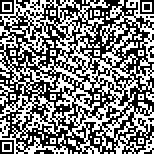| 摘要: |
| [摘要] 目的 分析新生儿院内感染败血症的临床特点、病原菌、药敏特点,探讨其防治措施,以指导临床早期用药。方法 回顾性分析新生儿重症监护病房(NICU)的19例新生儿院内感染败血症的临床资料、致病菌及治疗效果。结果 新生儿院内感染败血症临床表现不典型,以反应差为主要表现,辅助检查中C-反应蛋白为最敏感指标,致病菌中革兰阴性菌占63.2%,以肺炎克雷伯菌为主,革兰阳性菌占36.8%。未发现一例真菌性败血症。19例中治愈11例(57.9%),好转4例(21.1%),死亡4例(21.1%)。结论 加强新生儿护理,严格无菌操作,做好手卫生,加强物表消毒,减少与患儿不必要的接触等可有效降低院内感染机会。合理使用抗菌素,严防院内感染的发生。严密监测生命征,早期识别新生儿院内感染败血症并发感染性休克以及快速足量扩容(1 h之内)是降低病死率的关键。 |
| 关键词: 新生儿 败血症 院内感染 致病菌 药物敏感试验 |
| DOI:10.3969/j.issn.1674-3806.2016.10.21 |
| 分类号:R 722.1 |
| 基金项目: |
|
| Clinical analysis of 19 neonates with nosocomial septicemia |
|
ZHAN Li bin, CHEN Guo shen
|
|
Department of Pediatrics, the First Hospital of Nanping Affiliated to Fujian Medical University, Fujian 353000, China
|
| Abstract: |
| [Abstract] Objective To analyze the clinical characteristics, pathogens and drug sensitivity of neonatal nosocomial septicemia and to provide evidences for prevention and early treatment of this condition.Methods Nineteen neonates with nosocomial infections in the neonatal intensive care unit(NICU) of our hospital were included in this study. The clinical data, pathogens, treatment and prognosis were retrospectively analyzed.Results The clinical symptoms of neonatal septicemia were atypical, with poor responses to the infections. C- reactive protein was the most sensitive indicator in the auxiliary examination. Among the pathogens isolated, the Gram-negative bacilli accounted for 63.2%, such as Klebsiella pneumoniae(the most common), the Gram-positive cocci accounted for 36.8%, and but fungal infections were not found. 11 cases(57.9%) were cured, 4 cases(21.1%) improved and 4 cases(21.1%) died in 19 cases.Conclusion It is efficient to reduce the nosocomial infection through strengthening the nursing care of newborn,strict aseptic manipulation and hand hygiene, improving the surface disinfection and reducing unnecessary contact with children. Rational use of antibiotics might be the effective strategies for preventing neonatal nosocomial septicemia. It is key to reduce the fatality rate by closely monitoring the vital signs, early identifying the complications such as septic shock and rapid capacity expansion(within 1 hour). Early powerful antibiotic empiric therapy might be an effective method for preventing neonatal nosocomial septicemia and its complications. |
| Key words: Neonate Septicemia Nosocomial infection Pathogen Drug sensitivity test |

